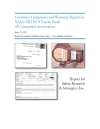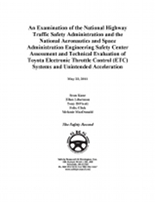The National Academies of Science released today its long-awaited review of the National Highway Traffic Safety Administration’s Toyota Unintended Acceleration investigations, its regulatory policies and the agency’s next steps in dealing with electronic defects. The 16-member panel of volunteers, from a multitude of related disciplines, met 15 times over about 18 months, and were, at least, in attendance for presentations from 60 contributors.
The panel’s most significant critique was an acknowledgement that NHTSA is ill-equipped to deal with the new age of vehicle electronics:
“For NHTSA to engage in comprehensive regulatory oversight of manufacturer assurance plans and processes, as occurs in the aviation sector, would represent a fundamental change in the agency’s regulatory approach that would require substantial justification and resources (see Finding 4.6). The introduction of increasingly autonomous vehicles, as envisioned in some concepts of the electronics-intensive automobile, might one day cause the agency to consider taking a more hands-on regulatory approach with elements similar to those found in the aviation sector. At the moment, such a profound change in the way NHTSA regulates automotive safety does not appear to be a near-term prospect.”
Conclusions like these pepper the NAS report. Throughout The Safety Promise and Challenge of Automotive Electronics; Insights from Unintended Acceleration, the panel tries to have it both ways: to lay claim to a scientific process, without employing any actual science, to maintain that it was not second-guessing NHTSA’s investigations, but concluding that the agency was justified in closing them; to say that the Audi Sudden Unintended Acceleration controversy isn’t comparable to the Toyota debate because automotive technology has changed so drastically, and yet lean heavily on the 1989 NHTSA-commissioned report, An Examination of Sudden Acceleration. Continue reading

